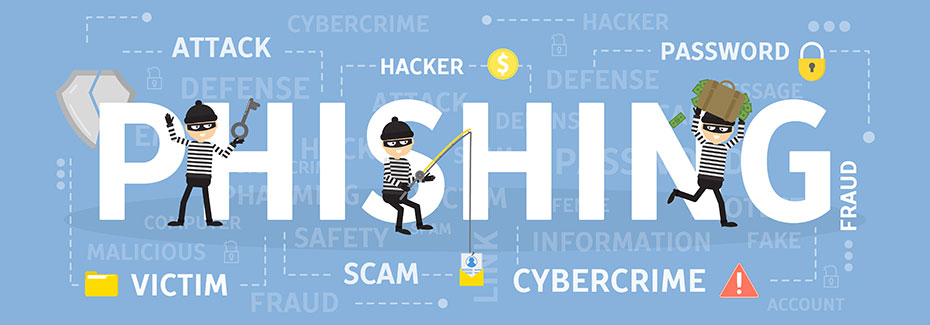How To Spot A Phishing Email

Phishing emails are the most common way for criminals to distribute malicious software or obtain sensitive information. Is your business safe from these attacks? We have some tips that you can follow to make sure your business doesn’t become a victim!
In a previous post, we gave you the top 3 email security tips for your business. Unfortunately, phishing emails are a more common occurrence now than ever before. According to Symantic, the average user may receive on average 16 phishing emails per month. With so many avenues of attack available to phishers, businesses should prioritize their security standards to make sure that they mitigate the risk of a compromised system.
What Are Phishing Emails?
Phishing is the fraudulent attempt to obtain sensitive information (think usernames, passwords, and financial information) for malicious reasons. Remember the joke about the Nigerian prince who emails you to give you a few million dollars? That is a phishing email.
Phishing emails can look very convincing; they may even appear to be coming from someone whom you’ve contacted before. Phishers are (sometimes literally) banking on your trust that these communications are legitimate, and that you will click on their links or open their attachments. Take a look at this example of how a phishing email might appear in your inbox:

To the untrained eye, the above email may look like a legitimate call from management to update personal information. If an unknowing employee clicks on any of those links without verifying that they are legitimate, they may enter personal information (such as name, date of birth, and a social security number) that will go directly to the phisher. Some phishers may even ask the employee to divulge company-related information. The phisher would then use this to illegally obtain financial information.
Following those links could also infect the employee’s computer with malicious software, which could then spread and compromise other computers on the same network. At that point, any and all business information could fall into the hands of those who wish to do harm. Do you see how even one successful phishing attack could prove detrimental to an entire company?
How Can I Avoid Phishing Attacks?
We are all at risk of phishing attacks. In fact, there’s a good chance that there is a phishing email sitting in your Spam folder right now. The key is that users are aware of what phishing emails typically look like and what to do when one pops up in your Inbox. Here are a few rules of thumb that you can follow to recognize and respond to these malicious emails.
Tips for Identifying Phishing Emails
Watch what you click! Benjamin Franklin said, “An ounce of prevention is worth a pound of cure.” This proverb proves especially true when dealing with phishing attacks: If you have any doubts about an email that comes to you, don’t click on any links or open any attachments.
Be vigilant! Keep an eye out for any emails that may look “off” in any way. Poor spelling and grammar are big giveaways that you may have received a phishing email, but scammers are getting more crafty. If you receive an unexpected email from a trusted source, you should call the sender to verify that the email was intentionally sent.
Don’t be afraid to report the email to IT or your managed service provider if you’re feeling suspicious. They have the tools necessary to safely inspect the email and its contents.
Report a breach if you think you may have already been compromised by a phishing attack! There is no shame in being fooled by phishing attacks, but it is vitally important that the appropriate parties are aware of any breach in security.
As long as we communicate through email, phishers will try to fool us into giving up valuable information. Businesses must make sure that employees can identify and deal with phishing attempts so that your information stays private. IT departments and managed service providers can be used to deal with these threats without impacting daily work flow. Don’t have an IT department or managed service provider? Consider working with one so that you can be comfortable knowing that there are professionals at your side.
